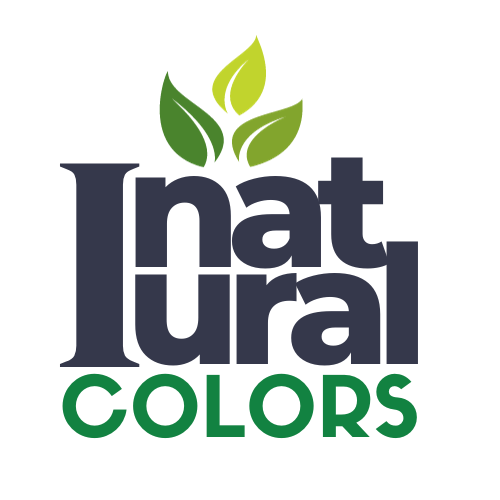Beautiful Plants For Your Interior

The Impact of Government Regulations on Natural Colors
Introduction
Natural colors are everywhere, from the food we eat to the clothes we wear. They’re derived from plants, minerals, and even insects, offering a more eco-friendly and health-conscious alternative to synthetic dyes. But how do government regulations affect the use and development of these vibrant hues? Let’s dive into the world of natural colors and explore the impact of regulatory frameworks on this fascinating industry.
History of Natural Colors
Ancient Uses of Natural Colors
Long before synthetic dyes, ancient civilizations relied on natural sources for color. Egyptians used henna, ochre, and saffron to dye fabrics and cosmetics. In China, natural dyes like indigo and madder were essential for textile production. These colors not only served aesthetic purposes but also had cultural and symbolic significance.
Transition to Synthetic Colors
The 19th century brought a seismic shift with the advent of synthetic dyes. These new dyes were cheaper, more vibrant, and easier to produce, leading to a decline in the use of natural colors. However, concerns about the environmental and health impacts of synthetic dyes have spurred a resurgence of interest in natural alternatives.
Revival of Natural Colors
Today, there’s a renewed focus on natural colors, driven by consumer demand for sustainable and health-conscious products. This revival is supported by advancements in extraction and processing technologies, making natural colors more viable for various industries.
Government Regulations Overview
Definition and Purpose
Government regulations are rules established by authorities to ensure products are safe, effective, and not harmful to consumers or the environment. These regulations encompass the approval, labeling, and usage of natural colors in different industries.
Key Regulatory Bodies
Several regulatory bodies oversee the use of natural colors, including the Food and Drug Administration (FDA) in the United States, the European Food Safety Authority (EFSA) in the European Union, and various national agencies worldwide.
FDA Regulations on Natural Colors
Overview of FDA Guidelines
The FDA has stringent guidelines for the approval and use of natural colors in food, drugs, and cosmetics. These guidelines ensure that all color additives are safe for consumption and use.
Approval Process for Natural Colors
The approval process involves rigorous testing for toxicity, carcinogenicity, and potential allergic reactions. Manufacturers must submit extensive data demonstrating the safety of their natural colors.
Case Studies: Approved and Rejected Colors
Several natural colors have received FDA approval, such as beta-carotene and annatto. However, some, like cochineal extract, have faced scrutiny and restrictions due to potential allergenic effects.
European Union Regulations
EFSA and Its Role
The EFSA plays a crucial role in regulating natural colors within the EU. It conducts scientific evaluations and risk assessments to ensure safety and compliance.
Specific Directives and Regulations
The EU has comprehensive regulations, including the Regulation (EC) No 1333/2008 on food additives, which outlines the permitted natural colors and their usage limits.
Comparative Analysis with FDA
While both the FDA and EFSA prioritize safety, their regulatory approaches can differ. The EU tends to have more stringent requirements for natural color additives, influencing global manufacturers to comply with the highest standards.
Impact on the Food Industry
Compliance Costs
Adhering to regulations incurs significant costs for food manufacturers. These include testing, certification, and potential reformulation of products to meet regulatory standards.
Changes in Food Production Processes
Regulations drive innovation in food production, encouraging manufacturers to develop new methods for incorporating natural colors without compromising quality or safety.
Consumer Perception and Demand
Consumers increasingly prefer naturally colored foods, perceiving them as healthier and more environmentally friendly. Regulatory compliance enhances consumer trust and drives demand for natural products.
Impact on the Cosmetics Industry
Regulations Specific to Cosmetics
Cosmetics regulations ensure that natural colorants used in products like lipsticks and eyeshadows are safe for skin application. The FDA and EFSA both enforce strict guidelines to protect consumers.
Challenges and Opportunities for Manufacturers
Navigating these regulations poses challenges for cosmetics manufacturers, particularly in ensuring stability and consistency of natural colors. However, it also presents opportunities for brands to market their products as safe and natural.
Market Trends Influenced by Regulations
The trend towards clean beauty is heavily influenced by regulations, with consumers seeking products free from synthetic additives. This has led to a surge in demand for naturally colored cosmetics.
Impact on the Textile Industry
Regulations Governing Textile Dyes
Textile regulations focus on environmental impact and worker safety. Natural dyes must comply with standards that limit the use of harmful substances and promote sustainable practices.
Sustainable Practices and Compliance
Regulations encourage the adoption of sustainable practices, such as using biodegradable dyes and reducing water consumption in the dyeing process. Compliance not only benefits the environment but also enhances a company’s reputation.
Case Studies of Textile Companies
Several textile companies have successfully integrated natural dyes into their production processes. For instance, some fashion brands have gained recognition for their eco-friendly practices and commitment to sustainability.
Health and Safety Considerations
Ensuring Consumer Safety
Regulations are essential for ensuring that natural colors do not pose health risks. This involves extensive testing for potential contaminants and ensuring that colors are free from harmful chemicals.
Studies on Natural Color Safety
Numerous studies support the safety of natural colors, but ongoing research is crucial for identifying any long-term effects. Regulatory bodies rely on scientific evidence to update safety guidelines.
Regulatory Measures for Risk Mitigation
To mitigate risks, regulations mandate proper labeling and usage instructions. This helps consumers make informed choices and reduces the likelihood of adverse reactions.
Environmental Impact
Sustainable Sourcing of Natural Colors
Regulations promote sustainable sourcing practices, ensuring that natural colors are harvested responsibly without depleting natural resources or harming ecosystems.
Regulatory Requirements for Environmental Protection
Environmental regulations require companies to minimize waste and pollution associated with natural color production. Compliance helps protect biodiversity and reduce the ecological footprint.
Success Stories and Ongoing Challenges
Several companies have successfully implemented sustainable practices, but challenges remain, such as ensuring the scalability of eco-friendly methods and managing costs.
Economic Impact
Costs of Compliance for Businesses
Compliance with regulations can be costly, particularly for small businesses. These costs include testing, certification, and potential adjustments to manufacturing processes.
Impact on Small vs. Large Businesses
While large businesses may have the resources to easily comply with regulations, small businesses often face significant financial and logistical challenges. However, compliance can also open up new market opportunities and enhance competitiveness.
Economic Benefits of Adhering to Regulations
Adhering to regulations can lead to economic benefits, such as increased consumer trust, access to new markets, and potential subsidies for sustainable practices.
Global Perspective
Regulations in Other Countries
Countries around the world have their own regulations for natural colors, with varying degrees of stringency. Understanding these differences is crucial for companies operating internationally.
International Trade Implications
Regulations affect international trade, as products must meet the standards of importing countries. This can complicate supply chains but also drive global standardization efforts.
Harmonization of Global Standards
Efforts are underway to harmonize global standards for natural colors, facilitating easier compliance for multinational companies and ensuring consistent safety and quality.
Future Trends in Regulation
Potential Changes in Legislation
Future regulations may become even more stringent, with increased focus on sustainability and health. Staying ahead of these changes is crucial for businesses to remain compliant.
Innovations in Natural Color Production
Technological advancements are likely to lead to new methods for producing natural colors, reducing costs, and improving quality. These innovations will shape future regulatory landscapes.
Industry Adaptation Strategies
Businesses must adopt proactive strategies to adapt to changing regulations, such as investing in research and development, and fostering collaborations with regulatory bodies.
Consumer Awareness and Education
Role of Consumer Advocacy Groups
Consumer advocacy groups play a vital role in raising awareness about the benefits and safety of natural colors. Their efforts influence public opinion and regulatory policies.
Educational Initiatives by Governments and NGOs
Governments and NGOs are increasingly involved in educating consumers about natural colors, promoting informed choices, and encouraging industry transparency.
Impact of Social Media and Information Dissemination
Social media platforms are powerful tools for disseminating information about natural colors and regulations. They enable direct communication between consumers, brands, and regulatory bodies.
Conclusion
Government regulations significantly impact the use and development of natural colors across various industries. These regulations ensure safety, promote sustainability, and enhance consumer trust. As the demand for natural colors grows, staying informed about regulatory changes and adopting compliant practices is essential for businesses. By embracing innovation and prioritizing sustainability, companies can thrive in this evolving landscape.
FAQs
1. What are natural colors?
Natural colors are dyes derived from natural sources such as plants, minerals, and insects. They are used in food, cosmetics, textiles, and other industries as a more sustainable and health-conscious alternative to synthetic dyes.
2. Why are government regulations important for natural colors?
Government regulations ensure that natural colors are safe for consumers and the environment. They set standards for the approval, labeling, and use of these colors, promoting transparency and trust in the market.
3. How do FDA and EFSA regulations differ?
The FDA (U.S.) and EFSA (EU) have different regulatory frameworks, with the EFSA generally having more stringent requirements. Both prioritize safety but may have varying approval processes and usage guidelines for natural colors.
4. What challenges do businesses face in complying with natural color regulations?
Compliance can be costly and complex, especially for small businesses. Challenges include rigorous testing, certification, and potential changes to manufacturing processes to meet regulatory standards.
5. How can consumers identify products with natural colors?
Consumers can look for labels indicating the use of natural colors and check ingredient lists for specific natural colorants. Certifications and endorsements from regulatory bodies or consumer advocacy groups can also guide informed choices.



